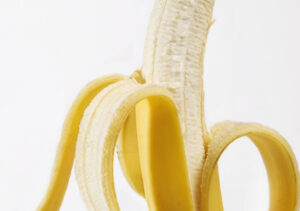GO BANANAS

Bananas are popular all around the globe and are Australia’s favourite fruit. They are the most purchased fruit in our shopping baskets, and most families always have them in the fruit bowl.
Bananas have obvious benefits such as sweet taste, creamy texture and natural packaging and portability (except when your kid leaves one in the bottom of their school bag- eeeuw!). It’s unfortunate that the trend toward low-carb diets has sullied the reputation of bananas but apart from this trendy criticism, the nutrition and health benefits of bananas are many and varied.
They are a natural energy booster for the body, and a mood booster for the mind thanks to their carbohydrate, vitamin and mineral content, and their fibre supports a healthy gut. Bananas have a low GI (47-53), unless they are overripe and then their GI is medium (57). This is because some starch converts to sugars as they ripen. While green leafy vegetables get a lot of good press for their folate content, bananas are a rich source. Folate has a range of functions in the body, but one that resonates with busy people is it helps reduce tiredness. And while citrus are seen as the poster-fruit for vitamin C, one average banana has 15% of the daily recommended amount. Vitamin C supports a healthy immune system and a global pandemic has heightened awareness and importance of this function. Bananas also contain polyphenol antioxidants to help protect us from damage inflicted by free radicals generated naturally during metabolism and by risks in our environment such as pollution and ultra-violet radiation. A review of the health promoting and disease-preventing effects of bananas found a variety of bioactive components with a raft of benefits including anti-cancer effects with potential for future drug development for cancer prevention and treatment.
Not only are they a nutritious package but they are versatile too. Bananas are great in baking such as cakes, muffins or loaves (banana ‘bread’ – really cake – is a café classic down under) and puddings. Bananas are the ideal topping for wholegrain cereal, pancakes and crispbread and excellent pan fried, grilled or barbequed with a dollop of ice cream or yoghurt for dessert. Their sweetness and thick texture make them perfect for smoothies, on their own or mixed with other fruits such as berries or mango.
There’s a natural ripening progression of the banana which offers something for everyone: firm and less sweet, or soft and more sweet. Once they’re too far gone to eat fresh, they come into their own for cookies or smoothies, and you can freeze them whole in the skin until you’re ready for them. And continuing in a zero-food waste ethos, you can even eat the skin! Banana skin is nutritious and rich in fibre, including resistant starch which nourishes the gut microbiota and soluble fibre (pectin) which helps manage blood glucose and cholesterol levels. After washing, add the pureed skin and flesh to cakes and smoothies, or boil in water to make tea.
| Raw banana | |
| 4.5 Health Stars | |
| Glycemic index 47 | |
| Serving size – 1 medium banana (150 g or 5.3 oz) | |
| Kilojoules | 591 |
| Calories | 141 |
| Protein (g) | 2.1 |
| Fats (g) – total | 0.0 |
| Includes: – Saturated fat (g) | 0.0 |
| – Monounsaturated fat (g) | 0.0 |
| – Polyunsaturated fat (g) | 0.0 |
| Saturated : unsaturated fat ratio | N/a |
| Carbohydrates (g) – Total | 32.7 |
| Available (Includes): | 29.4 |
| –Natural sugars (g) | 19.2 |
| –Natural starches (g) | 10.2 |
| –Added sugars (g) | 0.0 |
| –Added starches (g) | 0.0 |
| Unavailable (Includes): | 3.3 |
| –Dietary fibre (g) | 3.3 |
| Sodium (mg) | 0 |
| Glycemic load (g) | 14 |
| Diabetes exchanges | 2 |
| Ingredients: Banana |
- Mondal and colleagues. Cancer Preventive and Therapeutic Potential of Banana and Its Bioactive Constituents: A Systematic, Comprehensive, and Mechanistic Review. Front Oncol, 2021








